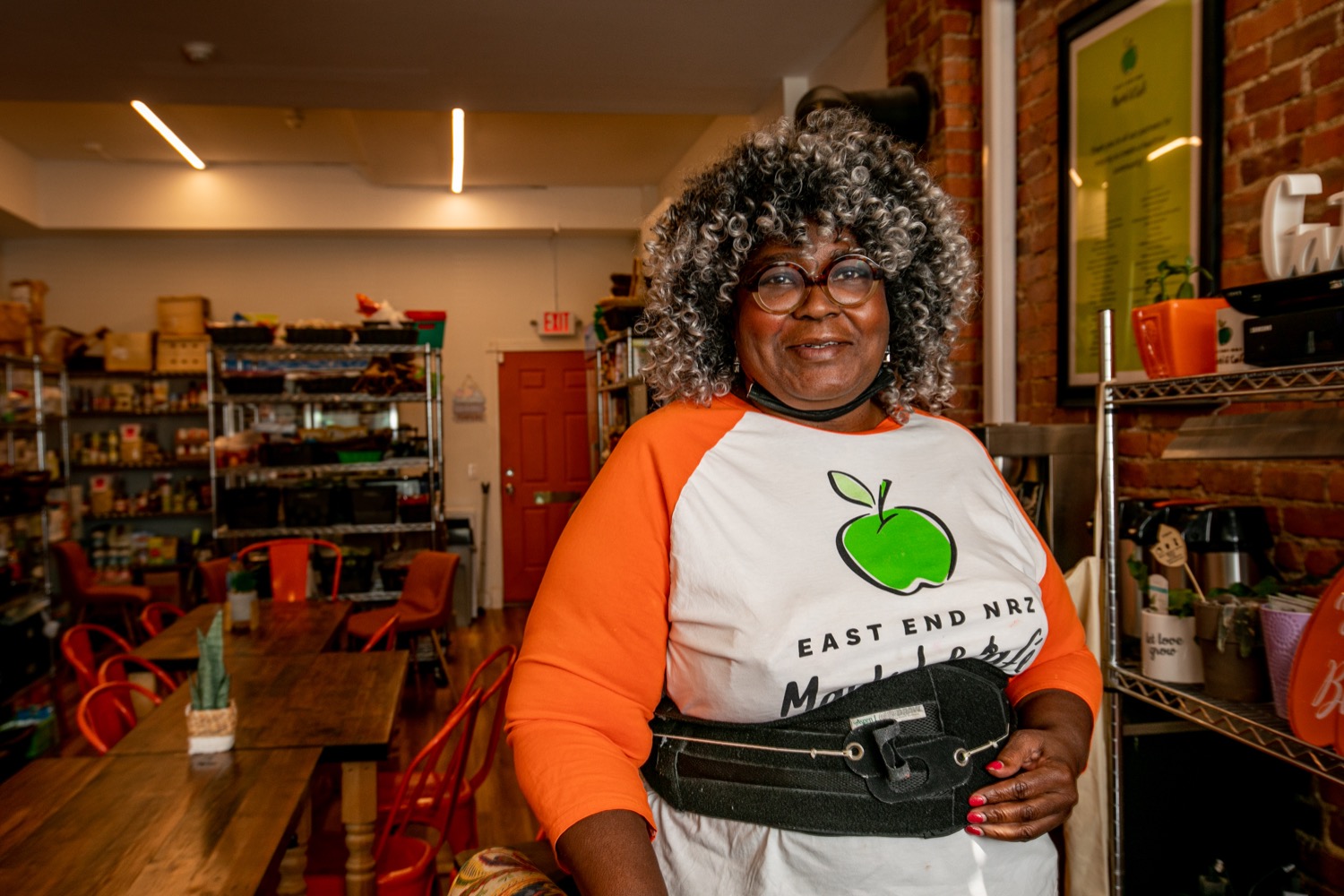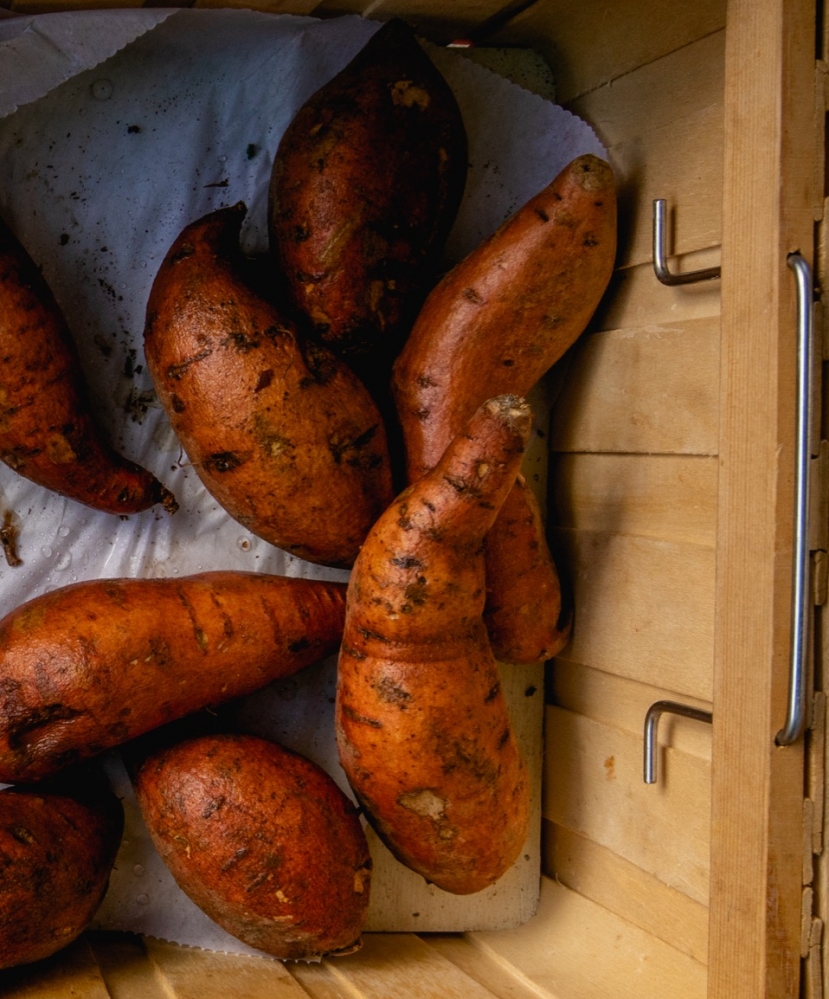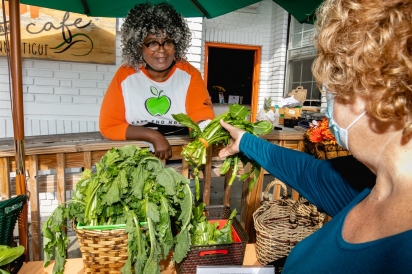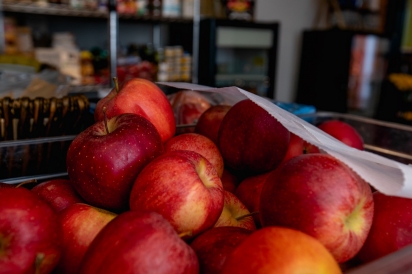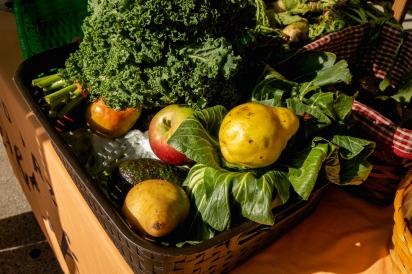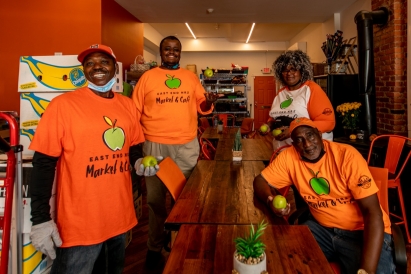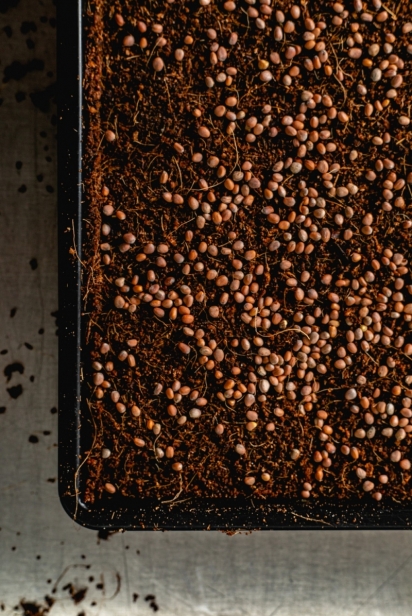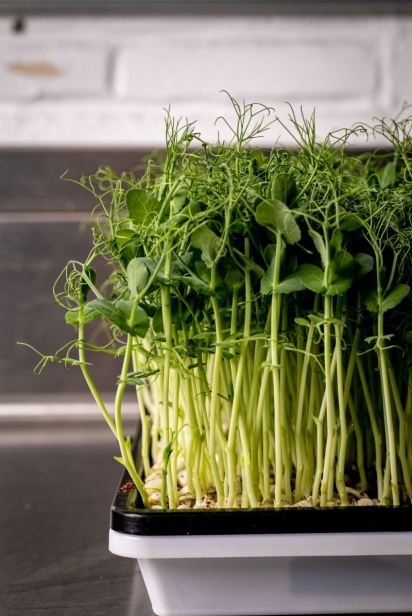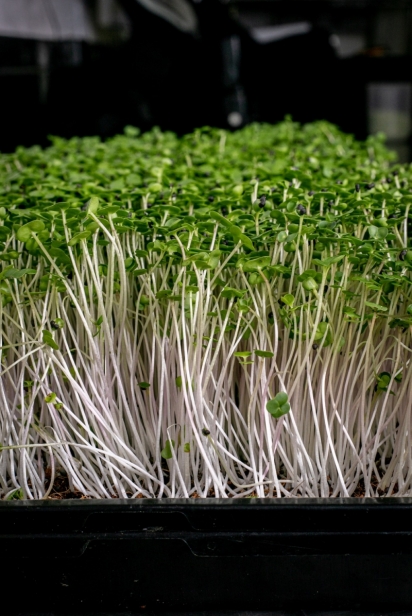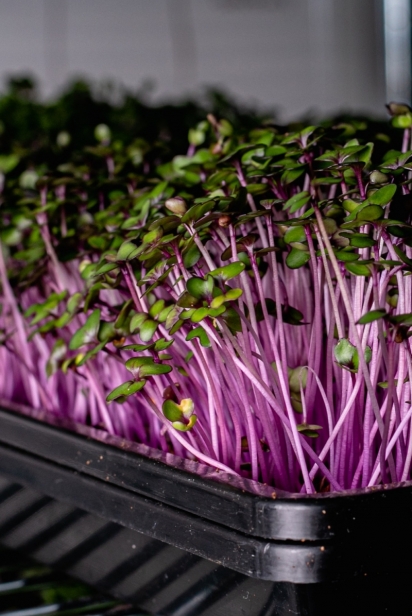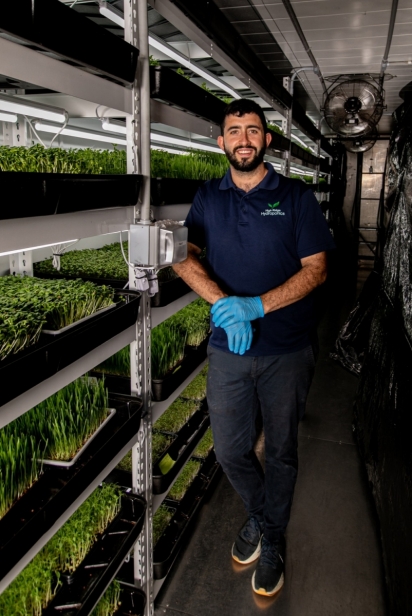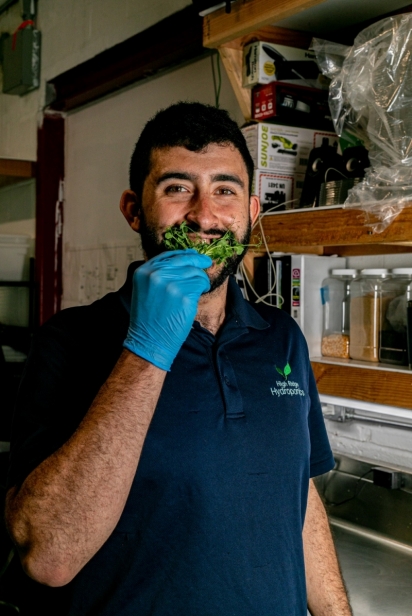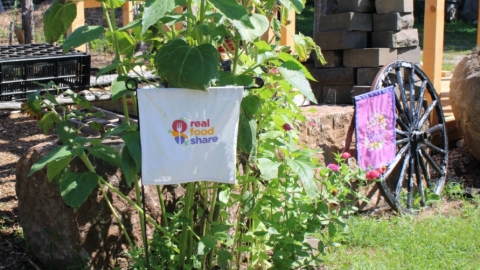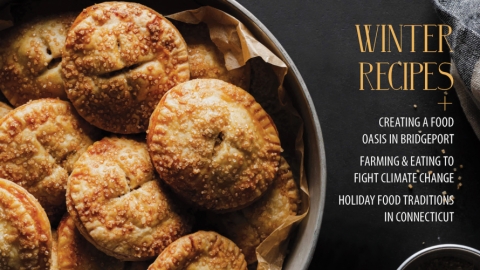Creating a Food Oasis
Imagine taking two or three buses just to go grocery shopping. What if your only accessible food was from a convenience store or a fast food restaurant? Unfortunately, that can often be the case for those who live in low-income neighborhoods, many of which lack a nearby grocery store.
An estimated 19 million people — 6.2% of the nation’s total population — have limited access to a supermarket or grocery store, based on information in a February report from the Annie E. Casey Foundation, a charitable foundation that fosters public policies and human service reforms to help vulnerable children and families. In Connecticut, some of the biggest “food deserts” lie in major cities like Hartford, New Haven, and Bridgeport. A region is often labeled a food desert when its residents have a lack of access to fresh fruits and vegetables. There are also “food swamps” that abound with fast food restaurants, bringing residents a surplus of inexpensive food, but little in the way of good nutritional sustenance. In some cases, a city or region can be a little bit of both — no access to fresh food, but fast food as far as the eye can see.
A Desert in Connecticut
Having been without a full-service grocery store for more than 35 years, the East End of Bridgeport is clearly a food desert. Debbie Thomas-Sims, Deb Caviness, and Kristen duBay Horton — who were part of the 20-member Neighborhood Revitalization Zone (NRZ) Committee in Bridgeport — knew something had to change. But how? Their answer was the East End NRZ Market & Café, which opened in 2019 on Stratford Avenue.
“We always knew it had to be done,” says Caviness, who is the President and CEO of the Greater Bridgeport Opportunities Industrialization Center. “The East End of Bridgeport is the longest standing food desert in the state. We just didn’t know where to start.”
Decades without access to a proper grocery store in the East End helped contribute to its high adult obesity rate (around 87%), which leads to other health issues, like cardiovascular disease, hypertension, and diabetes. The three women visualized a place where people could access fresh, healthy food to help improve the community’s health, but to do this, they needed the necessary financial backing. When they heard about the Healthiest Cities & Counties Challenge — sponsored in part by the Aetna Insurance Company — they saw an opportunity. In 2017, they were awarded $10,000, and two year later, after applying for an additional national grant, they were awarded a further $250,000. This was the kind of capital they needed to turn a desert into an oasis, and with it they were able to open the market and café in February 2019. Since then, the market has been providing East End residents with job opportunities, a local meeting place, health and wellness programs (including nutritional counseling, gardening instruction, and cooking classes), and, of course, fresh, healthy food at an affordable price.
“Healthy foods are expensive! When money is short, that’s no longer a priority,” says Thomas-Sims. “[At East End], we have good quality vegetables and it’s very inexpensive and it’s that way for a reason. We need our community to eat healthy. We don’t want them to leave because they couldn’t afford it.”
For duBay Horton, formerly Bridgeport’s Director of Health and Social Services, the market is about more than just food. Initial discussions about opening the market brought up many issues to address: jobs and the economy, neighborhood violence and shootings, and health issues. She thought they should start small and just pick one thing to focus on, but it was clear that until they solved all the community’s problems, nothing would get any better. Little by little, they were there to support whatever the community needed — cooking demonstrations, wellness workshops, forums on youth violence, and job training. East End Market is more than just a food hub. “It’s a safe haven — a gathering place,” she says. “The best thing about the market is that it’s driven by people living there.”
Growing Food in a Desert
While Thomas-Sims leads much of the day-to-day organization at the market, she’s also still involved with the market’s continued development. Through friends and word of mouth, she connected with Joe Alvarez from High Ridge Hydroponics. Initially set up in Ridgefield and now in South Norwalk, Alvarez grows about a dozen different varieties of microgreens in 40-foot shipping containers, including arugula, two varieties of pea shoots, two varieties of radish, red cabbage, kale, wheat grass, and broccoli. His operation is all organic — no pesticides, herbicides, or fertilizers, and only non-GMO seeds — and the whole process uses 85-90% less water than traditional farming.
“The nutrient density is super high for these greens. They are super colorful, harvested super fresh, and grown super locally,” says Alvarez. “This is what’s possible. It’s like we’re putting a well in a desert. This is precision growing. I see this as the future of farming.”
East End will be the first iteration of what Alvarez hopes can proliferate elsewhere. Using them as a model, others can take this set up — growing food year-round in shipping containers with air and water filtration systems — and implement it in any food desert in the country. As Alvarez points out, one benefit of an urban farm like this is that you’re not dependent on soil quality. In fact, otherwise undesirable locations can easily accommodate such an operation, as is the case for Alvarez and the East End Market as they setup shipping containers on a lot on Central Avenue. It’s a site that used to be known as one of the worst brownfields in Bridgeport. Known colloquially as “Mount Trash More,” East End is furnishing it with a rebrand — “Mount Grow More” — and is in the process of outfitting it with hydroponic shipping containers: two for growing and one solely for production and management. Once up and running, Thomas-Sims envisions it as a “health field campus,” with the goal of leveraging the hydroponic farm as a way to stimulate the economy and create jobs around growing vegetables.
A National Problem
The East End of Bridgeport is not alone — across the nation there are towns and regions that are struggling with similar socioeconomic food issues. Chen Zhen, Associate Professor at the University of Georgia and author of “Food Deserts: Myth or Reality?” (published in the Annual Review of Resource Economics) argues that the best way to eradicate food deserts is to lower the price point of healthy foods. He contends that it’s not just about putting a new grocery store on the corner; the food must be cheaper.
Jiff Martin, the Sustainable Food Systems Extension Educator at UConn’s College of Agriculture, Health and Natural Resources, agrees with Zhen’s premise, but she takes the point one step further. “I say flip it. How about increasing the livable wages for people trying to buy that food? If we want to change our food system, we have to change our policies.”
According to Martin, lowering the price for healthy food faces a major hurdle due to a lack of serious government support for specialty food crops like fruits and vegetables. However, the government does readily support and subsidize what she calls the “big five” — corn, soy, sugar, peanuts, and cotton — several of which are central ingredients for much of our nation’s heavily processed (and unhealthy) food products. All the while, individual, small-scale farmers can’t make ends meet, and these farmers are frequently the ones producing the fruits and vegetables that are known for their innate health benefits. It begs the question — how do you lower the cost of healthy food but increase income for farmers? Both Martin and Zhen admit that there are no easy answers.
Martin goes on to discuss “redlining,” one of the formative problems with food insecurity in urban areas, which she labels as a “systematic disinvestment” in certain neighborhoods. By many accounts, the practice started in the 1930s when banks would refuse loans for mortgages to prospective low-income, minority homeowners in specific areas. These banks would differentiate those areas on a map in red ink, thereby “redlining” it. Supermarket redlining, however, didn’t start until the 1960s, when large grocery store chains began limiting new store openings to more affluent neighborhoods, rather than inner-city ones.
“There are a lot of factors in ‘how did we get here?’” Martin says. “Everyone wants fresh, good quality food. These neighborhoods are disempowered.” But she was also quick to point out that we shouldn’t demonize food swamps. “Those businesses are in the communities other businesses refuse to go to. They are often operated by local residents. A lot of the food they are serving is less than ideal, but I don’t want to devalue the impact of those businesses on their surrounding communities. You can get a convenient, warm chicken dinner for working parents who need to feed their kids quickly.”
Issues like these — the often wide disparity between needs and reality — are precisely what the East End NRZ Market & Café hopes to address. Where once only drive-through restaurants were available, the market now provides their community with a fresh food option — one step towards pushing the East End’s food desert back. In the process, they hope to improve the community’s health and bring the East End a fairer share of nourishment. As duBay Horton puts it, where you live should not decide how long you're going to live or how healthy you get to be.
> East End NRZ Market & Cafe: 1851 Stratford Ave., Bridgeport; 203-612-7150.
> High Ridge Hydroponics: 203-788-5180.


